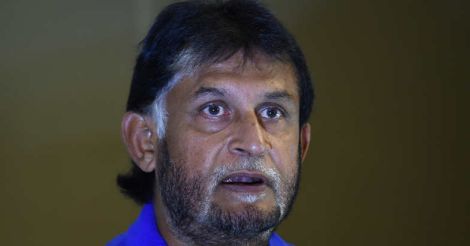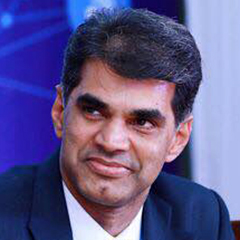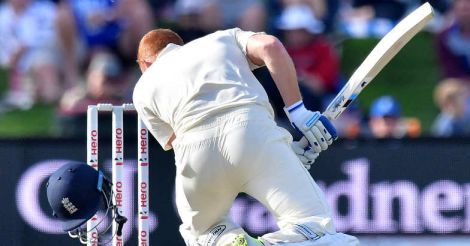Cricket has seen many changes during the last 40 years since Kerry Packer took on the cricket establishment worldwide by setting up his successful World Series Cricket (WSC) matches. Many of the innovations designed and implemented in the WSC matches, such a night cricket, white balls, coloured clothing etc have become part of the game world over. However, one development for which WSC has not been given required credit pertains to the area of protective equipment. It is not known to many that helmets, which are today an integral part of the kit of any cricketer, were first designed and used on a regular basis during WSC matches. Use of helmets has revolutionised cricket by helping the batsmen to break free from the fear of physical injury while facing fast bowlers and allowed the willow wielders to gain upper hand over the ones hurling the ball at speeds approaching 150 kms per hour.
In cricket, traditional protective equipment had consisted of gloves, leg guards (worn to cover legs from below knee) and abdomen guard (to protect private parts). With the advent of fast bowlers capable of inflicting physical injury, thigh pads (worn on front leg of batsman around hip extending midway through the thighs) and chest and elbow protectors made their appearance. However, no one had thought of wearing any equipment to the head and face despite some players suffering serious injury on account of ball striking these areas. Conservative wisdom in this regard was that a batsman equipped with correct technique and endowed with physical courage would be able to tackle balls aimed at his head without any discomfort. The flip side of it was that those who did not possess the required technical proficiency or feared head injury should not be playing the game at all. As M A K Pataudi once put it in his pithy style “Cricket is a hard game played hard by men using a hard ball”. This attitude also contributed to continuing with conventional headgear such as caps, hats etc till the late 1970s.
Thrilling sight
There is no sight on a cricket field more exciting than a fast bowler running in full steam directing all his energies at hurling the ball at maximum speed towards the batsman standing 22 yards away from him. Hence pace bowlers have always occupied an exalted position in the annals of cricket history. However, it was only during the infamous Bodyline tour of 1932 where England, under Douglas Jardine, subjected Australian batsmen to a relentless barrage of fast short-pitched balls aimed at the body, that the potential for causing grievous physical harm was first recognised. Howls of protest that arose in the aftermath of this series led to framing of laws that curtailed bowling of fast short-pitch balls intended to intimidate the batsmen. The speedsters who straddled world cricket during the four decades after that series used the bouncer only as a shock weapon to dismiss a batsman and it was seldom bowled to cause physical injury.
1974 would remain the seminal year in cricket history so far as intimidatory fast bowling is concerned. That year saw the emergence of Andy Roberts, the first Antiguan to play for the West Indies, as well as the return of two Australians - Dennis Lillee, after a serious back injury, and Jeff Thomson, the fastest of them of all. Michael Holding, whose bowling action was so smooth it resembled a Rolls Royce in motion, made his debut for the West Indies next year. The West Indies had a surfeit of riches in this department when Wayne Daniel, Joel Garner and Colin Croft entered international arena during the succeeding years. Clive Lloyd, captaining the West Indies, rewrote cricketing wisdom by omitting spin bowlers from the playing eleven and taking the field with only speedsters.
The power of intimidatory bowling was demonstrated to the cricket world, for the first time since 1932, by the Caribbeans against India at Kingston in 1976. In that Test, Holding and Daniel indulged in bowling bouncers and beamers (full length high pitches) aimed at the body of the batsmen, while the umpires turned a blind eye. India lost the Test, with five players unable to bat on account of injuries sustained, but the cricket world did not appear to take notice of the potential damage to the game on account of such tactics. The West Indian speedsters repeated this act against England during the series that followed. Tony Greig, then leading England and a gutsy batsman who had taken on Lillee and Thomson in their prime and scored centuries, wrote after the Test match at Old Trafford that for the first time in his cricketing career he felt “so really frightened” that he almost gave up.
When Packer launched his WSC in 1977, the West Indies and Australia were the two top sides in the cricket world. The West Indies had suffered a 1-5 defeat in the Test series held in Australia in 1976 and were looking forward to exact revenge for this humiliation. The Aussies, on the other hand, were the uncrowned champions of Test cricket, having not lost a series since 1972, when Ian Chappell took over the captaincy. They had a balanced attack with Max Walker and Gary Gilmour supporting Lillee and Thomson in the pace department and Ashley Mallett providing the spin bowling option. Their batting line-up featured legends such as Ian and Greg Chappell, besides Doug Walters, Rick McCosker and Ross Edwards. Into this side had walked in David Hookes, who created a sensation by scoring a stroke filled half-century in the Centenary Test of 1977.
The Australian Cricket Board had refused WSC access to the grounds and stadia under their control. Hence WSC was forced to hire stadia used for conducting other sporting events for their matches. However, the challenge involved here was not the hiring of stadia but the preparation of pitches on which the battle between bat and ball would take place. As time available was short, Packer’s team hit upon the idea of “nurturing” pitches in specially equipped greenhouses and then transporting them using hovercrafts to the stadia, where they would be transplanted in the middle. This was a revolutionary idea and there were many who wondered whether this would be successful. Packer’s men were able to pull it off and the stadia equipped with new pitches were ready for use on time for the matches.
However, one unforeseen complication in this process related to the quality of such artificially nurtured and transplanted pitches. They were of inferior quality when compared to the regular pitches and some of them also had issues on account of irregular bounce and early appearance of cracks. The batsmen were invariably at the receiving end on account of the vagaries of the pitches and matches tended to be low-scoring ones. Further, tackling the speedsters became a progressively daunting task on such pitches as the season progressed.
Nasty blow
In the first Super Test, Australia were in a spot against the West Indies, losing five wickets for 89 runs when Hookes and Rod Marsh mounted an offensive against the fast bowlers. Hookes, in particular batted brilliantly and had reached 77, with the help of 13 well struck boundaries when Roberts returned for his final spell. Hookes hooked the first ball from Roberts, a slow bouncer, to the fence to move to 81. Either he had forgotten that Roberts had in his armoury a faster bouncer, bowled with the same action but which came at the speed of lightning, or the hook shot had made him a trifle overconfident. Whatever the reason, he was unprepared when the faster bouncer came and was struck flush on the jaw. The effect of the impact was such that his body swirled around in a circle before collapsing on the pitch.
Packer, who was watching the match, drove the Jaguar car that transported Hookes to the hospital, where a double fracture of jaw and cheek bones was diagnosed. Packer also initiated measures to purchase helmets in bulk from the company in England from where England opener Dennis Amiss had picked up one that he used occasionally. Hearing about this development, Tony Henson, owner of the company Coonan & Delay, who specialised in making equestrian caps, sensed a business opportunity. He got in touch with the Australian players and sought their assistance to design a headgear that would meet the demands of cricketers while providing adequate protection to head and face. The prototypes developed were used by the Aussies during the finals of the International Cup played in February, 1978.
Use of helmets became the norm in WSC during 1978-79 cricket season. Players outside WSC also started wearing the helmet with Graham Yallop of Australia becoming the first batsman to sport one in a Test match while playing against the West Indies in 1978. The logic behind using it was best explained by the physician seen by Australian opening batsman John Dyson, who said “It never ceases to amaze me that you guys spend money on buying a tin or plastic box to protect your private parts but won’t consider protecting a far more important part of your anatomy”. Gradually the practice of wearing it permeated to first class cricket and finally to club and local level matches to such an extent that a helmet is today an integral part of a batsman’s protective equipment.
 Sandeep Patil. File photo: AFP
Sandeep Patil. File photo: AFPThe Indian players were slower to start using helmets and most of them desisted from wearing them till the tour of Australia in 1980-81. The injury suffered by Sandeep Patil, who was felled by a Len Pascoe bouncer in the first Test of that series, was the signal for Indian batsmen to change their mindset with regard to protecting their head. One notable exception was Sunil Gavaskar, who chose to wear a specially designed skull cap under his sun hat in place of the helmet.
Hookes' tragic case
Any article about history of helmets would be incomplete without mentioning the career of the player whose injury triggered the change in thought process about its use. Hookes recovered from the injury and played in WSC matches after five weeks, wearing a specially designed helmet. Unfortunately, he could never fulfil the early promise and ended up playing only 23 Tests, with one century to his credit, though he scored heavily in first class matches. After his playing days were over he chose a career in media, following which he was appointed as the coach of Victoria state side in 2002. He was fatally injured in a bar room brawl in 2004 when he was punched by a bouncer in the hotel, leading to a fall that caused severe damage to his brain, resulting in his death two days later. It was the sad end to the life of a talented cricketer who could not do justice to the abilities that had been vested in him by the maker.
(The author is a former international umpire and a senior bureaucrat)

























 England's Jonny Bairstow has his helmet knocked off by a bouncer during day one of the second Test against New Zealand in Christchurch on March 30, 2018. AFP
England's Jonny Bairstow has his helmet knocked off by a bouncer during day one of the second Test against New Zealand in Christchurch on March 30, 2018. AFP